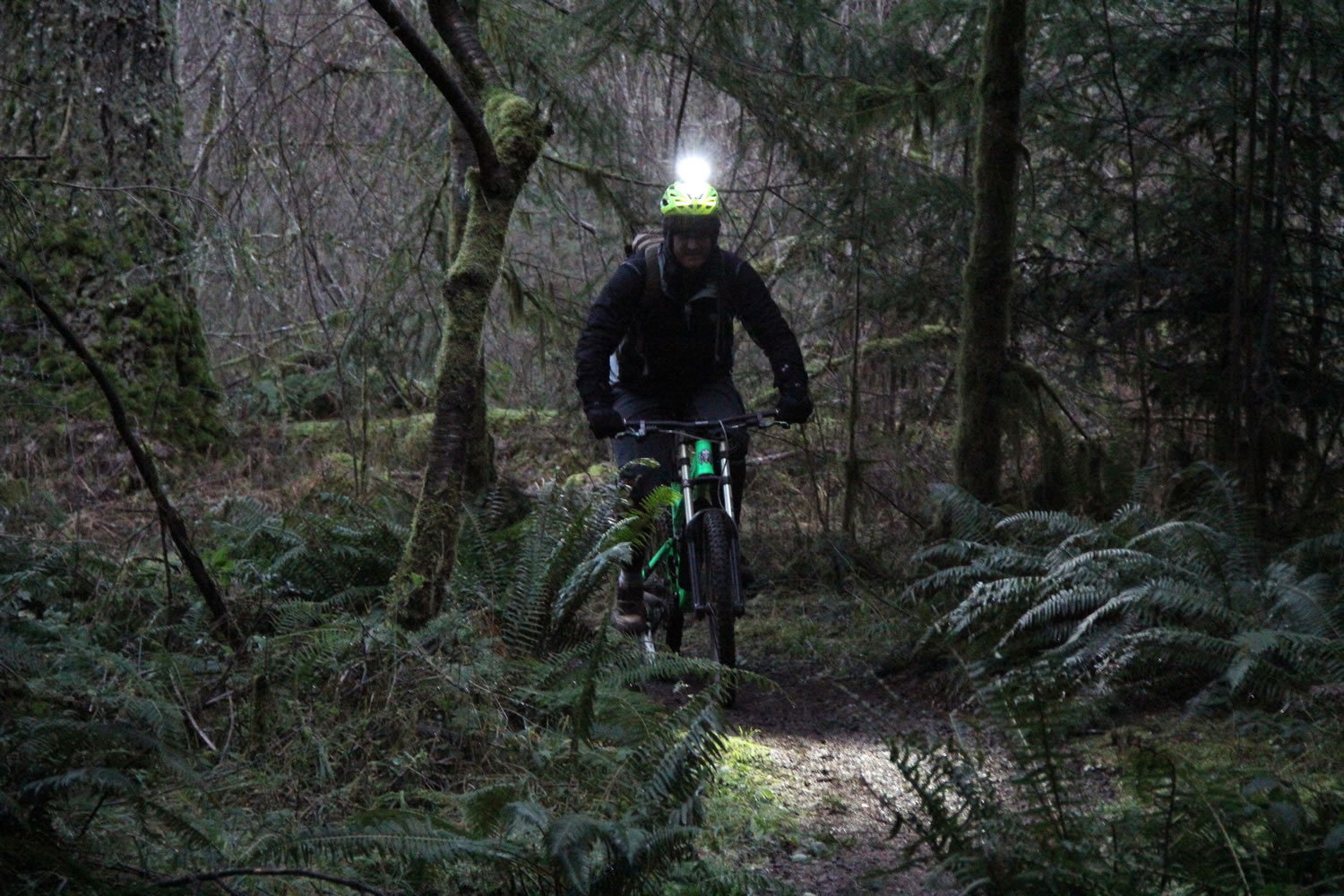It begins when you pop on your headlight, sending a tunnel of light into the darkening forest.
But mountain biking at night doesn’t officially begin until you drop downhill, swooping between trees and around curves on trails that appear little more than wormholes into the abyss.
Yes, going for a ride in the mountains after sunset seems crazy. Yet the thrill of navigating below starlight, through a pitch-black forest where the eyes of animals glow in the darkness, adds a new element of adventure to an already fun sport.
“One of my favorite things about riding at night is all the animals you come across,” said Dan Shell, who works at Santiam Bicycle in Salem and leads weekly rides. “You’ll see a lot of deer and even a porcupine running around, but the coolest thing is when you come across an owl. They’ll sometimes follow your light for miles, probably hoping you’ll scare up mice.”
Mountain biking at night is a semi-popular activity among local riders, but during winter it becomes more pressing. The short amount of daylight makes it virtually impossible to work a full-time job and have enough time to ride mid-week.
By adding a headlight to the repertoire, a group can head out at 4 or 5 p.m. and enjoy post-sunset riding for as long as their headlight batteries allow.
“That was one of the main draws for me,” said Pat Stephenson of Monmouth, who has been mountain biking for eight years. “When I started out, we had a group of friends that all wanted to ride but were either going to school or working during the week. Getting a headlight allowed us to ride more often.”
Night riding has become easier in recent years due to the improvement of headlights. The advent of LED lights, along with lithium-ion and lithium polymer batteries, has meant a brighter field of vision and a longer light source.
“The technology has gotten so much better the past couple years,” said Shell, who has been night riding for 10 years. “Even the cheapest lights today are three times as bright as the expensive ones in 2002.
The best part of the new technology is the batteries are a lot more efficient.”
“When we started out,” Stephenson said, “we had to carry these huge batteries that only lasted two hours. Now we have tiny batteries — smaller than a cigarette case — that last three to six hours. It’s an amazing difference.”
The process is simple. The light attaches to the helmet with enough force to withstand the bumps of the trail. The cost typically ranges from $89 to $389.
Shell recommends the 500-lumen model for beginners because it provides a good field of light, but at around $150 doesn’t break the bank. The battery can cost around $30 to replace.
The process of getting out during a winter night isn’t confined to the light, of course. Warm clothes, gloves and a backpack are important accessories, along with backup lights and batteries, snacks, maps, a compass, water and other essentials.
Mountain biking at night begins when you pop on your headlight and speed through the trees, below the stars, during style of riding that adds a new level of adventure to an already fun sport.



